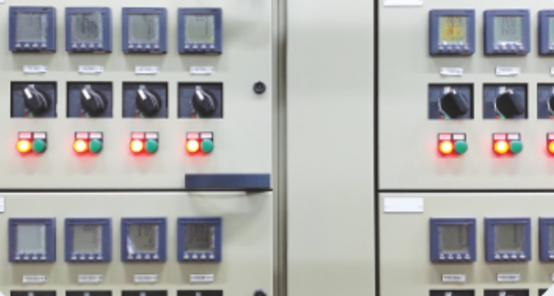Do you know the difference between Electromagnetic Relays and Solid State Relays? This article will be useful for you. A relay is an electrically controlled switching device. Its core principle is to use small currents to control large currents to realize automatic switching of circuits. This type of control transfers current from a weak circuit to a strong circuit. Relays are mainly divided into two categories: traditional electromagnetic relays and modern solid-state relays.



Working Principle between Electromagnetic Relays and Solid State Relays
How electromagnetic relays work
The basic structure of a traditional electromagnetic relay usually includes four main parts: electromagnetic coil, magnet, spring, and contacts (including static contacts and moving contacts). When the electromagnetic coil is energized, a current is generated, and the electromagnetic effect causes the iron to be absorbed, which overcomes the spring force, causing the contacts to close and conduct the working circuit. Once the electromagnetic coil loses power, the spring returns to its original shape, the contacts open, and the working circuit is cut off. The electromagnetic relay controls the opening and closing of the circuit by controlling the opening and closing of the contacts.
It should be noted that the cutting off of the electromagnetic relay is a physical cutting off. Once cut off, the power circuit will not be conductive, so there will be no leakage current. In addition, when the contacts are closed, the internal resistance between the moving and stationary contacts is almost negligible, so the relay does not cause a voltage drop and does not generate a lot of heat.
How Solid State Relays Work
Solid State Relay (SSR) is a contactless relay composed of solid-state electronic components. The switching function of solid-state relays usually relies on switching components such as opt couplers, MOS tubes, IGBTs, and transistors. Solid state relay is essentially an integrated circuit with switching function. After the input signal (high level or low level) passes through the trigger circuit, it controls the on and off of the switching components to control the on and off of the circuit.
Taking the MOS tube as an example, when the solid-state relay cuts off the working circuit through the MOS tube, it is not physically completely cut off. The MOS tube will still produce a small leakage current when it is cut off. In addition, when the MOS tube is turned on, there will be a certain forward conduction voltage drop, and this part of the electrical energy will be converted into heat energy. Therefore, solid-state relays usually need to consider better heat dissipation methods, usually using metal shells.
One of the advantages of solid-state relays is that they usually have various self-detection and self-protection functions such as over-voltage protection, over-current protection, and over-temperature protection. In particular, the emergence of some smart MOS tubes has enhanced the reliability and use of solid-state relays. life. In addition, the switching speed of solid-state relays is much faster than that of electromagnetic relays, with rapid switching and sensitive response.
Advantages & disadvantages between Electromagnetic Relays and Solid State Relays
Electromagnetic relay
Advantages: simple driving method, completely cutting off the working circuit, and good isolation.
Disadvantages: Slow switching speed, prone to sparks and noise, short lifespan, and susceptible to electromagnetic interference.
Solid state relay
Advantages: fast switching speed, sensitive response, multiple self-protection functions, and long life.
Disadvantages: Poor isolation, the working circuit may produce leakage current and forward voltage drop, and heat dissipation needs to be considered.
Depending on the specific application needs, electromagnetic relays or solid state relays can be selected to meet different circuit control requirements.






